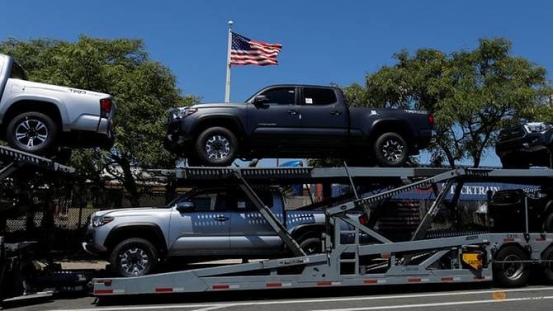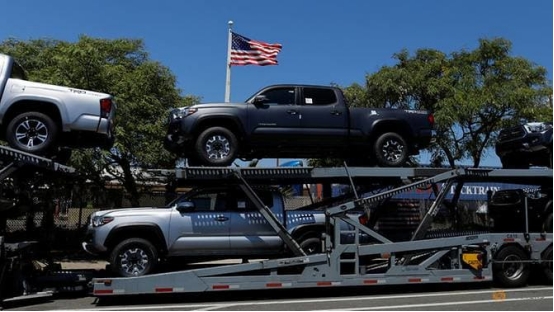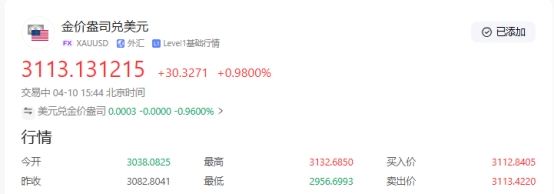The auto tariff storm escalates! Trump's Michigan "backyard is on fire"
- 2025年4月14日
- Posted by: Macro Global Markets
- Category: News

Since the U.S. policy of imposing a 25% tariff on imported automobiles and parts came into effect on April 3, it has caused severe shocks in the global trade pattern. Michigan, the core of the U.S. auto industry, continues to see political backlash.
On April 10 local time, the Detroit Regional Chamber of Commerce and the Michigan Automobile Association (Mich Auto) jointly issued an emergency statement, warning that the Trump administration's tariff policy would put one-fifth of the state's jobs (about 280,000 people) at risk and the annual output value of the automotive industry could shrink by $300 billion. At the same time, major trading partners such as China, the European Union, and Canada simultaneously launched counter-measures, the global trade friction index soared to a historical extreme, the demand for gold as a safe-haven asset surged, and the spot gold price broke through the $3,100/ounce mark, hitting a new high since 2025.

Policy implementation and industry impact
The scope of the Trump administration's tariffs this time far exceeds expectations, including 150 core component categories such as engines, transmissions, and lithium batteries, involving an annual trade volume of nearly US$600 billion.
AlixPartners estimates that the cost of each U.S.-made car will increase by $4,000, with annualized costs reaching $40 billion. The cost of 56% of models sold in the U.S. by companies such as Hyundai Motor will increase by $5,000-7,500. The irreversibility of supply chain restructuring exacerbates the crisis: Ford's relocation of production lines will cost billions of dollars and take several years, while Hyundai's $21 billion US investment plan will not ease export pressure in the short term.
The political economics of Michigan’s backlash
As the "heart of the automotive industry," Michigan's economic structure is highly dependent on transnational supply chains. Of the state's more than 1,000 auto suppliers, 80% of their parts come from China. The rising costs caused by tariffs have forced companies to launch "local substitution" plans, but they are difficult to achieve in the short term.
On April 5, Stellantis Group announced the suspension of operations at its factories in Mexico and Canada and laid off 900 employees, becoming the first U.S. automaker to lay off employees due to tariffs. Gabriel Ehrlich, an economist at the University of Michigan, predicts that steel and aluminum tariffs alone will result in the loss of 600 auto manufacturing jobs in the state. Combined with the impact of tariffs on entire vehicles, the actual number of unemployed people may double.
2. Trump’s political foundation in the Rust Belt is shaken
Rifts widen within the Republican Party
Opposition from Michigan Republican lawmakers and business groups has created a "political earthquake." The Detroit Regional Chamber of Commerce stated in a statement that the tariff policy will "disproportionately affect working and middle-class families" and called on the Trump administration to immediately stop the plan. Seven Republican senators jointly proposed the 2025 Trade Review Act on April 8, calling for restrictions on the president's power to unilaterally impose tariffs, but Trump threatened to veto the bill.

Michigan is a "swing state" in the 2024 general election, and Trump's support rate has begun to loosen. An Ipsos poll on April 9 showed that only 37% of voters in the state approved of Trump's economic policies, down 12 percentage points from November 2024. The local Democratic Governor Gavin Newsom publicly criticized the tariff policy as "a tax on hardworking American families" and stressed that China is Michigan's largest trading partner.
3. Gold market: "two-way drive" of risk aversion demand and policy game
Prices and capital flows
In the Asian session on April 10, spot gold broke through $3,100 per ounce, with a daily increase of 1.33%. COMEX gold futures positions increased by 18,000 lots, the largest single-day increase since 2022. Gold ETFs saw a net inflow of US$1.2 billion in a single day, indicating that funds were pouring into safe-haven assets at an accelerated pace.

U.S. March CPI data on April 10: If it exceeds expectations (market expectations of 4.8%), it may trigger expectations of a "hawkish" rate hike by the Federal Reserve, causing the gold price to fall back to $3,050; if it is lower than 4.5%, rising expectations of rate cuts may push the gold price above $3,150.
The tariffs on auto parts will take effect on May 3: core components such as engines and gearboxes will be included in the tax scope, and the cost pressure of automakers will be further transmitted to the consumer end.
The trade war and political backlash caused by automobile tariffs are reshaping the global economic landscape. The "backlash" in Michigan not only exposed the internal conflicts of Trump's policies, but also highlighted the fragility of the globalized industrial chain. Investors need to distinguish between "panic chasing" and "systematic allocation" in short-term fluctuations, strictly control their positions and implement stop-loss strategies to deal with possible liquidity shocks and data risks beyond expectations.
